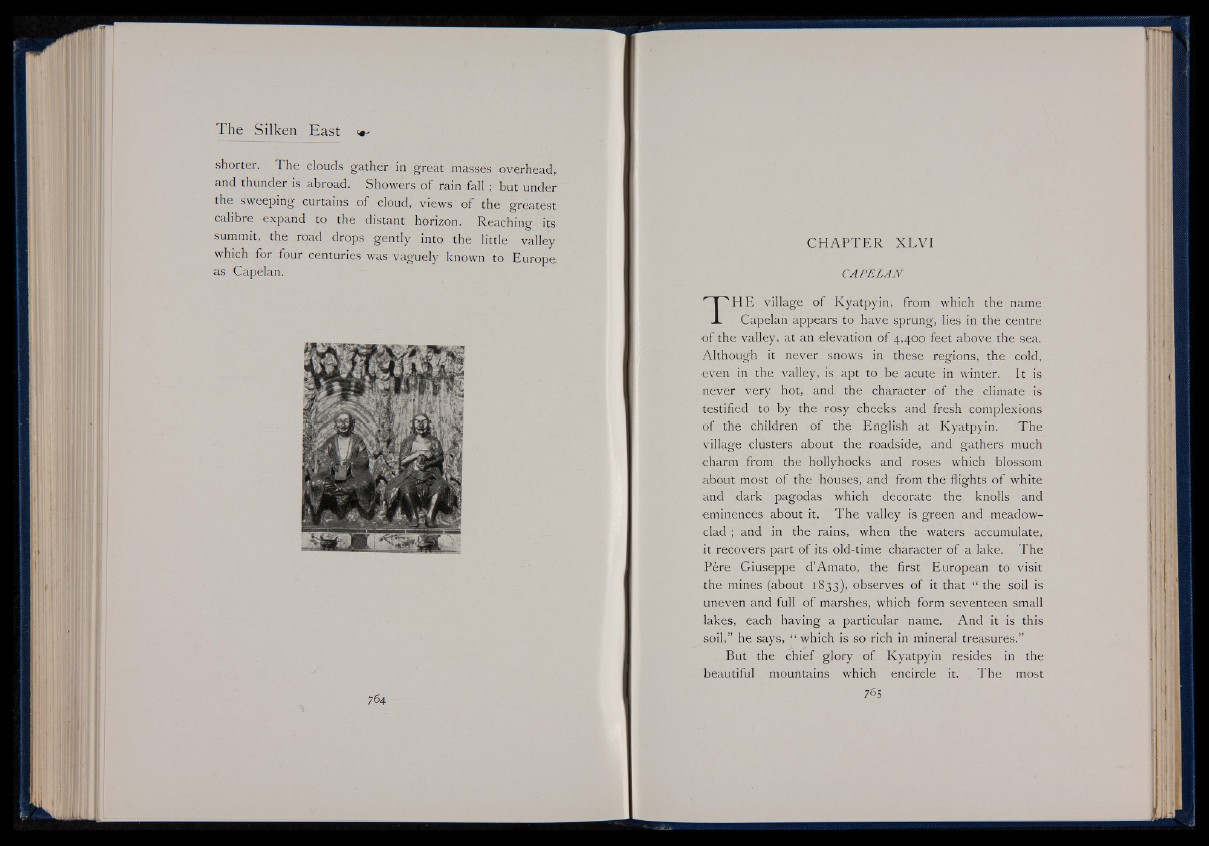
shorter. The clouds gather in great masses overhead,,
and thunder is abroad. Showers of rain fall ; but under
the sweeping curtains of cloud, views o f the greatest
calibre expand to the distant horizon. Reaching its-
summit, the road drops gently into the little valley
which for four centuries was vaguely known to Europe
as Capelan.
C H A P T E R X L V I
C A P E LAN
r I SH E village of Kyatpyin, from which the name
Capelan appears to have sprung, lies in the centre
o f the valley, at an elevation of 4,400 feet above the sea.
Although it never snows in these regions, the cold,
even in the valley, is apt to be acute in winter. It is
never very hot, and the character of the climate is
testified to by the rosy cheeks and fresh complexions
of the children of the English at Kyatpyin. The
village clusters about the roadside, and gathers much
charm from the hollyhocks and roses which blossom
about most of the houses, and from the flights of white
and dark pagodas which decorate the knolls and
eminences about it. The valley is green and meadow-
clad ; and in the rains, when the waters accumulate,
it recovers part of its old-time character of a lake. The
Père Giuseppe d’Amato, the first European to visit
the mines (about 1833), observes of it that “ the soil is
uneven and full of marshes, which form seventeen small
lakes, each having a particular name. And it is this
soil,” he says, “ which is so rich in mineral treasures.”
But the chief glory of Kyatpyin resides in the
beautiful mountains which encircle it. The most